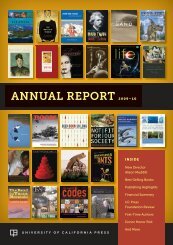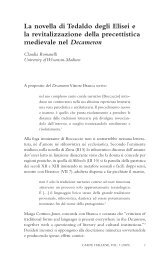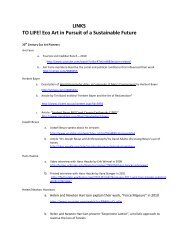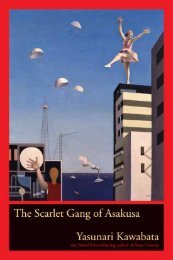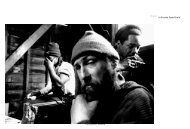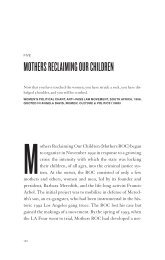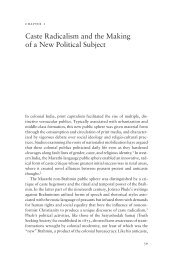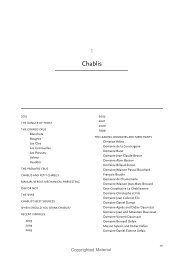Read Chapter 1 (PDF) - University of California Press
Read Chapter 1 (PDF) - University of California Press
Read Chapter 1 (PDF) - University of California Press
You also want an ePaper? Increase the reach of your titles
YUMPU automatically turns print PDFs into web optimized ePapers that Google loves.
14<br />
east harlem<br />
African Americans moving north after the Civil War. In addition, unlike<br />
turn-<strong>of</strong>-the-century immigrants who took advantage <strong>of</strong> a booming industrial<br />
economy, Puerto Rican settlers entered the labor market at a time<br />
when North America, especially New York City, was shifting from an<br />
industrial to a service-based economy. 9 This left many thousands <strong>of</strong><br />
Puerto Rican newcomers at a distinct disadvantage.<br />
José’s story explores the institutionalization <strong>of</strong> Puerto Rican identity<br />
along the broad stretches <strong>of</strong> 106th Street, chronicling the transformation<br />
<strong>of</strong> East Harlem from an Italian to a Puerto Rican community and the way<br />
in which Puerto Rican newcomers managed to become the old guard in<br />
a few short decades. Unlike Italians, Puerto Ricans were citizen immigrants,<br />
a peculiar paradox that would haunt them into the twenty-first<br />
century. José’s story focuses on the process <strong>of</strong> Puerto Rican entrenchment,<br />
playing on the ambiguous nationalism that stirs most <strong>of</strong> the local<br />
residents to shore up the boundaries <strong>of</strong> their community in the face <strong>of</strong> yet<br />
another wave <strong>of</strong> immigration. José is the face <strong>of</strong> these changes, born on<br />
the streets <strong>of</strong> East Harlem and fighting to hold on to El Barrio.<br />
“125th Street: The African Americans” is Lucille’s story. Sitting in the<br />
lobby <strong>of</strong> UPACA Gardens, Lucille presides with embittered optimism<br />
over the slow decline <strong>of</strong> public housing in the neighborhood. Born on<br />
117th Street in East Harlem, she played double Dutch in the shadow <strong>of</strong> the<br />
elevated train, innocent <strong>of</strong> the struggle undertaken by her mother and<br />
grandparents in their move from the South. But when her mother died<br />
quietly in a Harlem social club, she was swept into a subsidized existence<br />
<strong>of</strong> welfare and public housing. A young woman with a daughter <strong>of</strong> her<br />
own and two brothers to care for, Lucille refused to take help for granted.<br />
She created a youth center in the basement <strong>of</strong> her building and more than<br />
thirty years later still sits tenant patrol in the evenings. The tenements <strong>of</strong><br />
her childhood are all gone now, replaced with upscale townhouses and<br />
priced out <strong>of</strong> reach, but she can still see what once was—street life as community,<br />
the extended family <strong>of</strong> neighbors and friends.<br />
African Americans settled east <strong>of</strong> Fifth Avenue long before the first<br />
housing projects were built in the 1940s and before Puerto Rican migration<br />
began in earnest. The post-Reconstruction mass migration <strong>of</strong> African<br />
Americans out <strong>of</strong> the southern United States and into the industrialized



